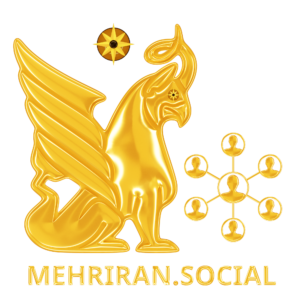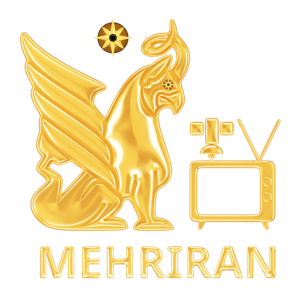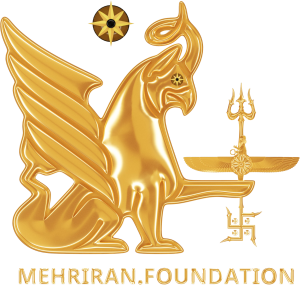NOTICE: If you are not viewing this site in Persian, the content on this page may have been automatically translated using Google Translate and may have some inconsistencies.
NOTICE: If you are not viewing this site in Persian, the content on this page may have been automatically translated using Google Translate and may have some inconsistencies. Dismiss
Menu
the writer: Sohrab Esfandiar
More than forty-three years have passed since the victory of the hideous Islamic Revolution and the most reactionary and reactionary regime in modern history over Iran. Few opponents of the regime، whether from the left، center، or right، thought that the fledgling Islamic Republic could survive for more than four decades. But the regime stayed, went through crises one after the other, assassinated or exiled its opponents, and was able to establish itself by creating an atmosphere of repression and the establishment of prisons.
The people of Iran, and perhaps the region and the world, have suffered many hardships and difficulties on the part of the regime during these decades. The big mistake that occurred in 1978 cost thousands of lives and the loss of the lives of several generations of young people in this country. These things happened so that the Islamic ideology and predatory rulers could work properly. The theocratic Islamic regime, which has no example of its nature in the world, despite all the misery that it has poured over our heads, at least made clear to the people a fundamental point which is not less sweet to understand than the bitterness of these years. Many years before the tragedy of February 11, Ostad Ahmad Kasravi warned that we owe a government to the jurists and turbans so that once and for all we can find out the nature of this evil and hypocritical group. This point was mentioned to the people in another language and in the same year 1978 by Dr. Bakhtiar, but in that mess of Islamism and mullahism was not bought by the masses and even intellectuals (except a few).
That key and golden point was nothing but “separation of religion from politics” whose importance and necessity is evident at present for anyone with a little political and social awareness. The words of Bakhtiar and Kasravi yesterday are well understood today and the grim end of the stormbird of the tyrannical dictatorship of Shoe Wear, 85 million Iranians see with their own eyes every day and feel it with their flesh and skin.
It cost us a lot to understand that the mixing of religion and politics and, worse still, the presence of clerics and missionaries on the bench and, even worse, ideologizing this religious interference is a poisonous mixture and a combination of catastrophe. Mixing which، in addition to the collapse and destruction of religion and religious values، has ruined social morality and rules a retrogressive course in society. Even today، I see that animals and the environment are not safe from this fatal scourge.
Fortunately, we can see that in addition to the majority of the masses, today some young clerics and clerics have also realized this mistake and indeed the disastrous combination of religion and politics, the news of the beating or killing of the mullahs, the burning of sacred books, the aversion of the youth and the disliked of this group among the people are all codes that indicate the absolute failure of the project of the eclectic religion and politics in the Islamic system.
These days, almost everyone from political activist to non-political has realized that their religion is not the same as their policy, which if it were, it would be the result of this hell in Iran, Iraq, Afghanistan, and so on. We’re witnessing. These days the problem is obvious and what needs to be expressed, but everyone is looking for a solution to get rid of this situation. Where is the key? What is the treatment?
Political and social science, and especially political sociology, in this particular case, two paths lead us that every country that has been able to pass through the ruptures of history to health and progress and development has gone through one of these two paths.
The two paths are: 1. secularism, 2. laïcité
There are many sayings and writings about these two concepts, but if we want to have a brief and useful definition of them:
– Secularism means cosmopolitanism. This is the world’s thinking, i.e. the angel of view and action, not the sky but the earth. It is a socio-cultural movement produced by England and the United States, based on which peaceful coexistence was established during a gradual process between religion and the church, and the church’s interference in the affairs of the country was reduced, and the relationship between religion and church underwent a transformation. However, the two institutions were not completely separated, but rather their relationship and trade-off became state-enforced, i.e., the church was subject to the influence of the state/state (albeit without prejudice to the principle of religious freedom and belief) as in the case of Denmark and England, or into a rather loose, not decisive, and all-out separation, as in the United States.
Laïcité is a term with Greek-Latin roots and a method of French origin, first implemented in this geography and enshrined in the constitution of 1905. Unlike secularism, laïcité is a political and functional instrument, its effect is immediate and not gradual, its limits are clear, and it has a comprehensive and impediment concept that is based on the separation of the public sphere from the private and the decisive separation of the religious institution from the institution of politics and de-ideology of the state/state apparatus.
Typical secular countries include: England, USA, Germany, Sweden (generally Protestant church countries)
Laic countries include France (the leader of laïcité), Turkey (from the time of Atatürk to the rise of Erdoganism in the early 21st century), Italy, Spain, Mexico, Quebec, Canada, and other semi-secular countries such as: Belgium and Portugal (generally countries with the Catholic Church)
If according to Dr. Reza Hazley’s opinion in the article “Iranian Revolution, both ideology and methodology” we want to formulate and separate the origins of these two concepts very briefly and concisely, we should say:
Secularism was the response of the Nordic countries and laïcité states to the solution of the southern European states (especially France) to the reaction of Christianity during the church age.
Two concepts, one trend and one adjective:
As mentioned, secularism and laïcitism are two separate concepts and two approaches to determining the status of religious and political authority (private and public) in one human unit and should not be confused with each other. Laïcité is a “legal style sheet” that formalizes and publicizes the ontological transition of a culture from “that world” to “this world” and becomes the norm for the growth and maturity of the inhabitants of a geography. Accordingly, secularism as a logic and secularization as a gradual process of fading or dismantling of religious faith/sharia must also be distinguished. The secularization of a society is a precondition and a prerequisite for the implementation of the laïcité “law” in that society.
In the book “Laïcité” by Guy Arère the French thinker Maurice Barbier is quoted as saying that the term “laïcité” as a noun and the word “laïcic” as an adjective:
The adjective “laïcité” precedes the noun laïcité; the word “laic” has two different meanings depending on whether it distinguishes itself from the Christian priest or is opposed to the religious order. The first meaning dates back to the Middle Ages, when Christian priests were distinguished from the Laic (ordinary and civil people). The second meaning is relatively new, and it emerged in the nineteenth century. The second meaning of the word “laic” is to say, “The aspect of non-religious or with any religion determines alienation.”
With this interpretation, what kind of logic should we Iranians go to? Laoist or secularism?
What is the cure for chronic pain of Islamic theocracy? What is meant by Sidratul-Muntaha that the Quran has mentioned?
We are the laïcité and secular activists of Iran who say that:
“Healing the pain of society, in a laissez-faire word”
In fact, our emphasis on the word laïcité has several reasons, primarily because a secular system only provides an executable, efficient and sustainable mechanism for the separation of religion and politics. Secondly, laïcité separates religion not only from political authority but also from other public spheres and institutions that are related to this field (such as economics, culture, art, sports, etc.), and thirdly, laïcité should not worry about the return of the old situation, whether in 20 years or 100 years. But the final reason for our insistence on laïcité and its preference for secularism is the unity that can create in the ranks of the Islamic regime’s fighters and opponents. Why? Because it has exactly the opposite of the Islamic system. It is the content that is contrary to what the clerical regime is. It is the same key that unlocks the Islamic Republic (political Islam) and exactly matches it. A lesser-known term is ignored, albeit “manipulated” but with high potential to advance the Iranian people’s protest movement. As Mr. Ramin Kamran of the old promoters of Laïcité has pointed out many times, we believe that laïcité can play the same role in the coalition and convergence among the militants, (since all individuals and groups, despite various differences and divisions, more or less agree on the rejection of religion and religious authority) that the word “constitutionality” had in the Qajar era and did what the Constitution did, and possibly the same result. The Constitutional Revolution, that is, to break the closed autocracy of the Qajar (victory of the revolution) and this time in the form of the disempowerment of the totalitarian Islamic-Shi’ite-Velayan regime.
120 years ago, today is the Gospel. Why not? **
But why not laïcité yes and secularism?
Laïcité has executive backing and can be assured by a “high percentage” of its function, whereas secularism is in fact the idea of separating religion from state/state, and has no more executive guarantees. (For example, in the largest secular country, the United States, we see that religion is not “absolutely” separated from politics and there are many problems in this regard. For example, we can look at topics such as: The President-elect’s requirement to swear the Bible in front of a priest, the obstacles to legalizing the right to abortion were opposed to Christian traditionalism, and the Harry Potter book ban pointed to a church fatwa in one of the states.
Laïcité is primarily suitable for countries with a strong religious background and dealing with religions and practices that have strong foundations in society. In the case of Iran, the Shi’ite Twelve-Tawhid Ja’fari religion is of this type. While secularism took place in countries that had undergone religious reforms, the majority of its inhabitants followed Protestant religion or its moons such as Calvinism and Lutheranism.
It reaffirms that laïcité is “law”, and that secularism is customary, so laïcité has legal backing and protection of the law, but secularism is just a consensus that cannot be relied upon in the sphere of politics because it is not consistent and leaves the way for religion, religious imposters and clerics to interfere in the public interest. If they do not enter the door, they will come out of the window.
Laicism is a “concrete and effective political practice”, but secularism is a “theory in an uncertain socio-cultural totality” whose manifestation and objectivity depends on the different temporal and spatial conditions of the target society. Laïcité “programs” methodically have the ability to “criticize” and “aim” secularism more “credit” so no rational person will give up criticism to stick to the credit!
In other words, secularism is suitable for countries such as Sweden, Britain and Germany, which have centuries of earthly philosophy and science, philosophers of this worldly and secular profession in these countries have created powerful theoretical foundations and the result of this cultural background has led people to have a secular thinking from birth and basically religion for them as food and color favorites. Personalization will be accepted. In these countries, secularism is sufficient to contain religion, but in Iran and in the Islam-stricken region of the Middle East, where everything has an Islamic flavor and the concentration of superstition is high, this is not possible and insufficient. In fact, the dynamism of these traditional/religious societies and the sanctity that still resides in the social life of a part of their people, does not allow such a thing to be done and only a higher authority must legally and principally enforce and protect this separation so that religious freedom and freedom “from” religion are fully achieved and not harmed.
If we compare the two concepts very simply، perhaps the best example is the theorem of the whole and the part. If secularism is part of a house، laïcité is the whole house and encompasses secularism. In principle, what secularism cannot do, laïcité does absolutely, and that is guaranteed.
One of the main reasons for the rejection of secularism is that Iran had a secular system during the time of Mohammad Reza Shah, and we can see what the result was, this system did not work in Iran and from within it a terrible religious system emerged.
But Iran has had laïcité experience before. In the time of Pahlavi I, Reza Shah came to Turkey inspired by Atatürk’s grammatical laicization and implemented a laïcité in Iran (although secularism had begun before that trip and with the living actions and initiatives of Dawar and Mr. Foroughi), but because it was carried out by an authoritarian government and from above, his life ended with Reza Shah’s departure and Reza Shah’s laïcité to secularism. The king has fallen down. In the last analysis, the era of Reza Shah is closer to the definition of laïcité, and the era of the Shah is more similar to the concept of secularism.
The important point is that we want laïcité with democracy this time to complement each other، only that the effects and results we have in mind will last. This time it is supposed to be laïcité, not a coercive and top-down order, but a two-way agreement between the people and the government/government so that everyone can benefit from it and leave the field satisfied. As they say, a winning agreement – wins, no bloodshed! The condition for the moral, cultural and intellectual excellence of a society is the unconditional freedom of citizens in the areas of thought, conscience, expression and self-expression, because it is only in such conditions that the spiritual and philosophical development of man is possible, this beautiful and dreamy landscape in a secular system in the best and most organized way possible is attainable and will be preserved.
The demand for laïcité has been rooted in Iran since the constitutional period and has been pursued by the democratic cult of parliament, but the legitimate constitution of the mullahs and the mullahs prevented its inclusion in the Constitution Amendment.
In the end, it is not bad to look at the importance and necessity of separation of religion from politics and the non-interference of clerics in the affairs of the country from the words of a great and respected politician, Ahmad Qavam al-Saltaneh, who states:
“As much as I hate demagoguery in political affairs, I dislike hypocrisy and salves on religious matters. Those who have strengthened the black reaction under the pretext of fighting the Red Extremists have seriously damaged freedom and have wasted the efforts of the founders of the Constitution for the past half century. I will keep religion out of politics, while respecting the sacred teachings of Islam, and prevent the spread of superstitions and retrogressive ideas. My heartfelt intention is to separate religion from politics. Rouhani must fulfill the duty of the clergy What else does it have to do with the governor of such a city or the head of customs or the election of such a place?”
The function of the Laïcité slogan is the function of the Constitutional slogan in the Constitutional Revolution.
The function of the Laïcité slogan is the function of the slogan of oil nationalization in the national movement.
The function of the Laïcité slogan is the same as the slogan of the republic in the ill-fated 1979 revolution.
Laïcité is a central slogan that can bring people together because it is the need of the day of society.
* Laïcité is the sword of Damocles over the head of the Islamic regime.
Certainly، the path to prosperity and salvation of Iran passes through Laicite’s boulevard.
End of story: Laïstia is the end of the religious tyranny. With the establishment of laïcité and secular rule، the old case of religious interference in the affairs of society that has been rooted in Iran since ancient times and has worsened since the Safavid era will be permanently closed.
The only rational way to confront the monster of political Islam as evidence of history and philosophy of history, political philosophy and social science is #لائیسیته and alone. May the future secular Iran serve as a successful model for other Islamic-stricken countries in the region and the world, which will certainly be the case.
“Help the Iranian Mehr with the Iranian Mehr”
– The original version of the present memo was written in 7757 Mithra، 1398 solar and for the website of the Iran-Liberal Organization and was modified and completed in 7760 Mithra-1400 solar year. This is the final version of the article.
– Cohrɑb Єcfundↄɑr
Sohrab Esfandiar – Fellow of Mehr Society of Iran
Be the first to write a review
Post Views::
7
Related

- +1 (415) 685 8888
- info@mehriran.tv
-
St. Kilda Road towers level 1, 1 Queens Road Melbourne,
Victoria 3004 Australia
Copyright © MehriranTV 2012 - 2024










